Black History Artist spotlight: Gerald Williams
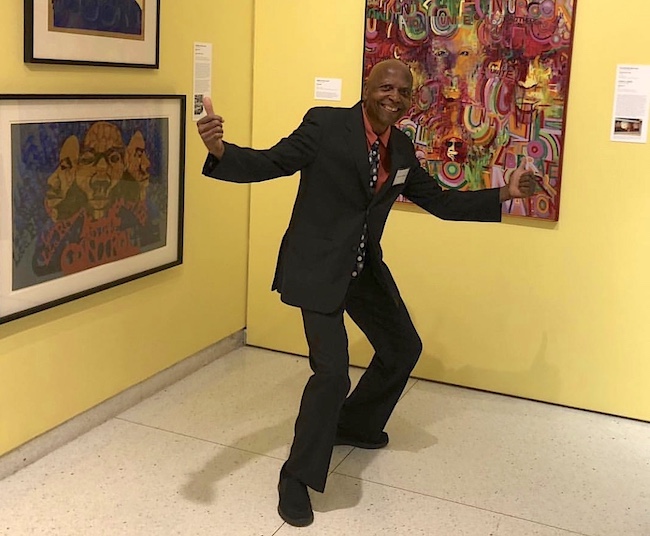
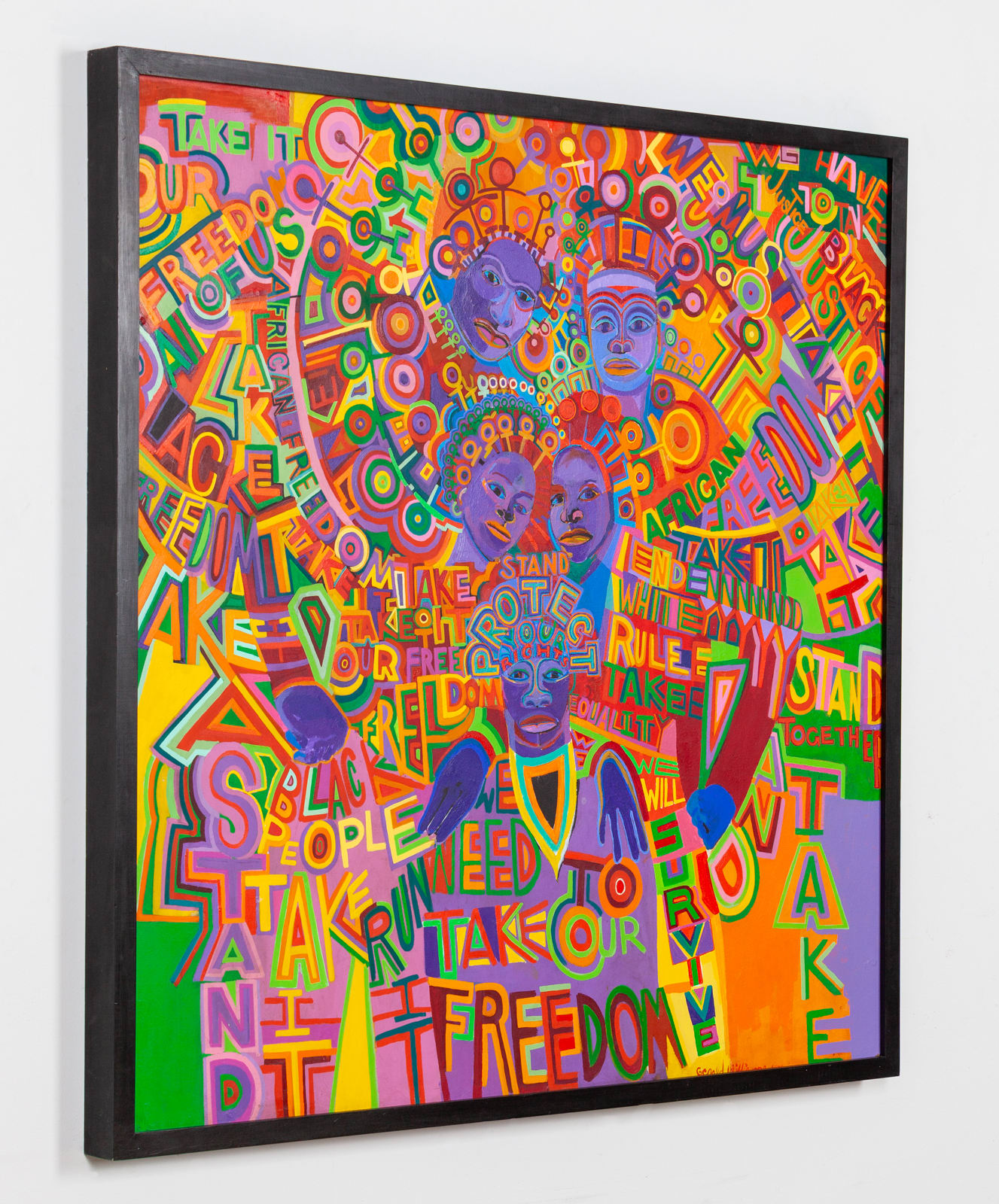
Take It
“A nation is a mental construct. Country is land, something you can dig in, concrete. A nation is how you perceive yourself, the relationships that people have among one another. The interactions that people have. That’s what makes a nation.”
- Gerald Williams
Gerald Williams is an American painter whose work explores culture, place and identity from a global perspective. Williams is one of the original five cofounders of AFRICOBRA, an artist collective formed on the south side of Chicago in 1967, which became the definitive visual expression of the Black Arts Movement.
Defined by civil rights struggles that came to a head with Martin Luther King Jr.’s assassination and the ensuing riots across the United States, 1968 was a pivotal if violent turning point for race relations in the country. That year, five African American artists in Chicago formed a collective that aimed to celebrate black culture and define its aesthetics and that came to be known as AfriCOBRA (African Commune of Bad Relevant Artists). As founding member Gerald Williams said in a 2011 interview for the oral history project Never the Same, the group, which is still active today, set out to investigate whether there was or should be such a thing as a culturally specific black art.
Source: CLICK HERE

Family
In an interview about the movement, Williams had this to say:
RZ: And what did belonging to AfriCOBRA and the AfriCOBRA philosophy mean for you as a young artist?
GW: Oh, it meant everything. It really did, you know. I didn’t have a clear direction other than what I was gleaning from my studies at the Art Institute and other art history classes. It turned me completely around and really caused me to focus on my own environment. And I can tell you that one of the instructors I had had, I had to go to a ballet, as part of a music appreciation class, and it was Coppélia or one of those ballets, and then later on I was just doing some sketches of some ballet dancers, in a life drawing class or something, and doing quick sketches of ballet dancers, Degas kinda like flashed through my mind, and then later on in another class an instructor said, “you don’t know anything about ballet.” And he said, “why don’t you draw what’s around you?” It made me mad; it was kind of an insult. I said, no, I don’t, you know, I like it, it’s music and dance and it’s expressive and colorful and you know, and I like the way the dancers move their bodies and it would be a nice thing to be able to draw! [chuckles]
But you know, he was right, you know, paint what you know, or draw what you know, and look at it as what you know. And it was just about that time that AfriCOBRA really became an important aspect of my involvement in art. So it caused me to focus a lot, it was a linchpin for all of us. We all had our style, Wadsworth had a style that was already well developed and Jeff had a style that was already developed and Jae had her medium that she was developing as well as Barbara. But we all made a quantum leap from where we started to where we wound up after our first conscious effort to focus on the principles that we decided to work on.
SOURCE: Click here for full Interview
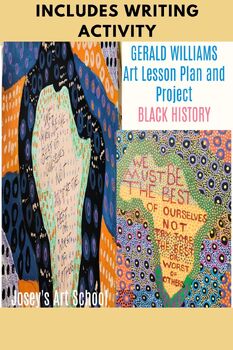
CLICK HERE TO VIEW ALL OF THE LESSONS I HAVE IN MY "TEACH ABOUT BLACK ARTISTS" SERIES
Black History Feature: Artist Spotlight on Howardena Pindell
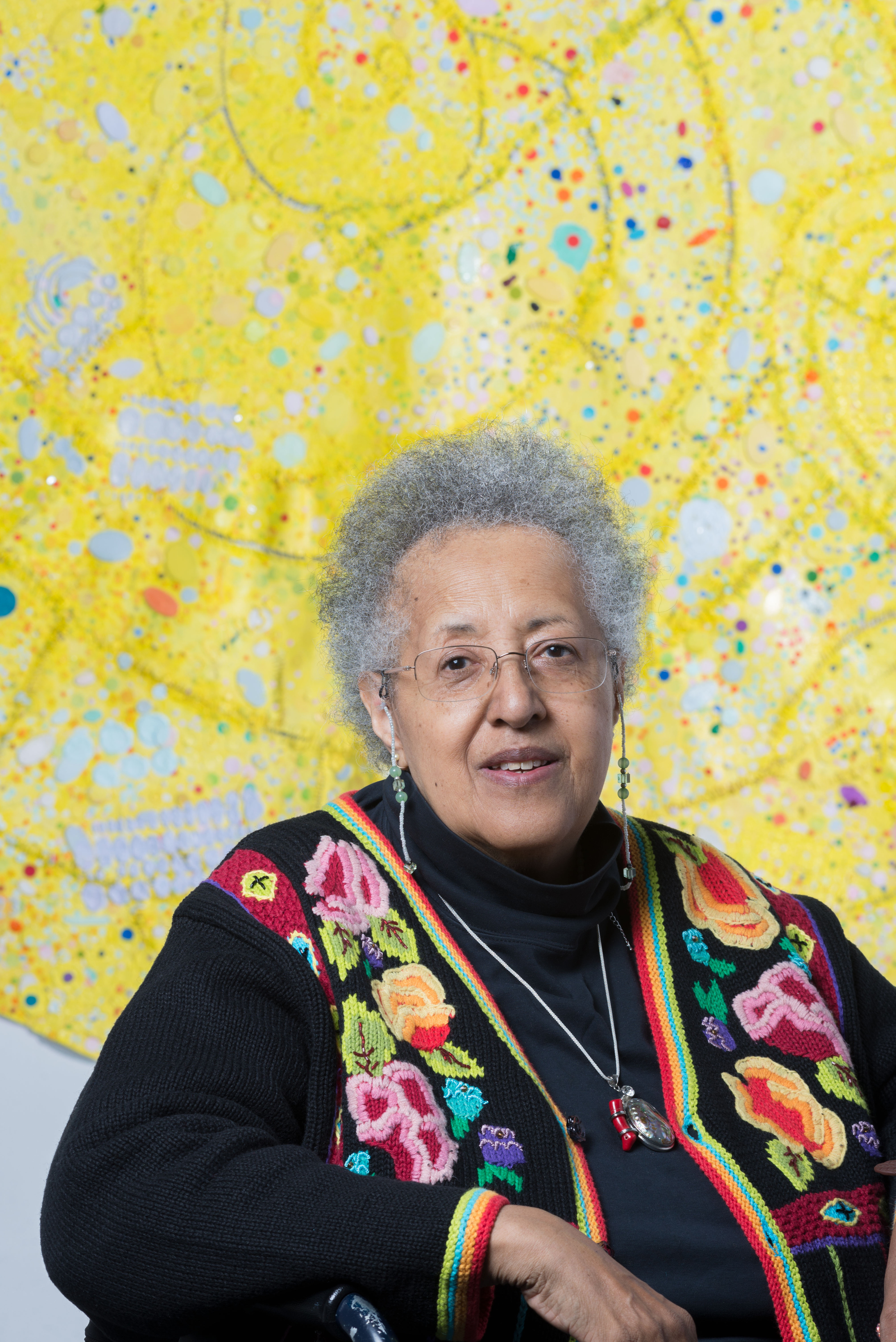
Welcome to my series "Teach about Black Artists"
I have created a series of Art lessons inspired Black and Brown Contemporary Artist to inspire the artist in your students. I want to make art from all cultures with all of its unique qualities available to all schools. My hope is that this promotes not only awareness of the different styles of art but also an appreciation for the many ways people express themselves. In this way, perhaps Dr. Montessori's vision for peace through children can become a reality.
.

Howardena Pindell, Untitled, 2010.
Today's Featured Artist is Howardena Pindell
Howardena Pindell is an American artist, curator, and educator. She is known as a painter and mixed media artist, her work explores texture, color, structures, and the process of making art; it is often political, addressing the intersecting issues of racism, feminism, violence, slavery, and exploitation. She is known for the wide variety of techniques and materials used in her artwork; she has created abstract paintings, collages, "video drawings," and "process art."
Source: CLICK HERE

Pindell often employs lengthy, metaphorical processes of destruction/reconstruction. She cuts canvases in strips and sews them back together, building up surfaces in elaborate stages. She paints or draws on sheets of paper, punches out dots from the paper using a paper hole punch, drops the dots onto her canvas, and finally squeegees paint through the “stencil” left in the paper from which she had punched the dots. Almost invariably, her paintings are installed unstretched, held to the wall merely by the strength of a few finishing nails. The artist’s fascination with gridded, serialized imagery, along with surface texture appears throughout her oeuvre.
Source: CLICK HERE
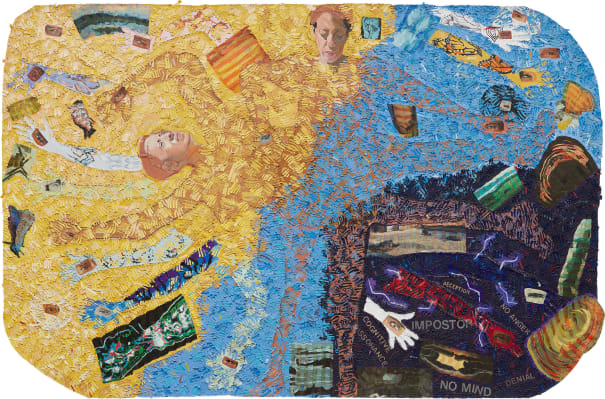
Autobiography: The Search (Chrysalis/Meditation, Positive/Negative)
To find art lessons inspired by Howardena Pindell and other Black Artists, click here:
Joseys Art School Episode #105 Eiffel Tower Paris Kids Drawing Lesson Art Lesson for Kids
You can find my art lessons on Teachers Pay Teachers
CLICK HERE: https://www.teacherspayteachers.com/Store/Joseys-Art-School
Look at my free art videos on YOUTUBE: https://www.youtube.com/playlist?list=PLbQExZltWJHERASlzbZ6nLtjeqvpAgLY7
Josey's Art School Episode #35 Heart Tree Beginner Art Journaling Art Classes Small Business
You can find my art lessons on Teachers Pay Teachers
CLICK HERE: https://www.teacherspayteachers.com/Store/Joseys-Art-School
Look at my free art videos on YOUTUBE: https://www.youtube.com/playlist?list=PLbQExZltWJHERASlzbZ6nLtjeqvpAgLY7
Joseys Art School Episode #57 Rothko Kids Art Lesson #2 Art Classes for Kids fine Art
You can find my art lessons on Teachers Pay Teachers
CLICK HERE: https://www.teacherspayteachers.com/Store/Joseys-Art-School
Look at my free art videos on YOUTUBE: https://www.youtube.com/playlist?list=PLbQExZltWJHERASlzbZ6nLtjeqvpAgLY7

